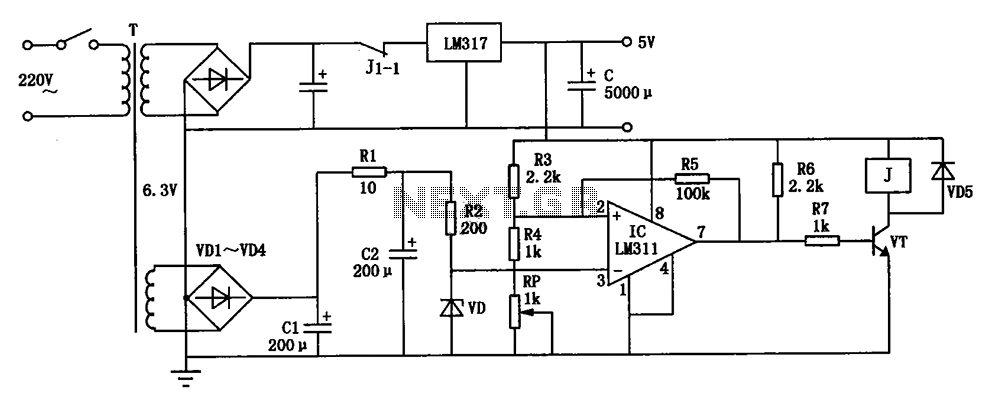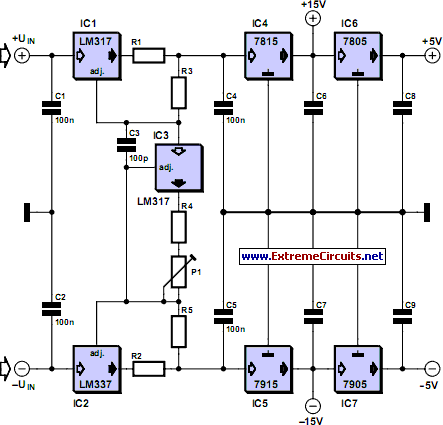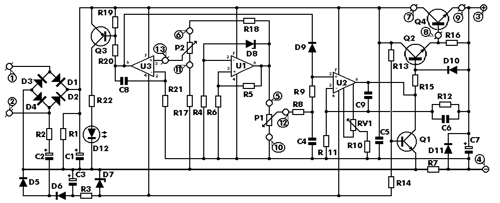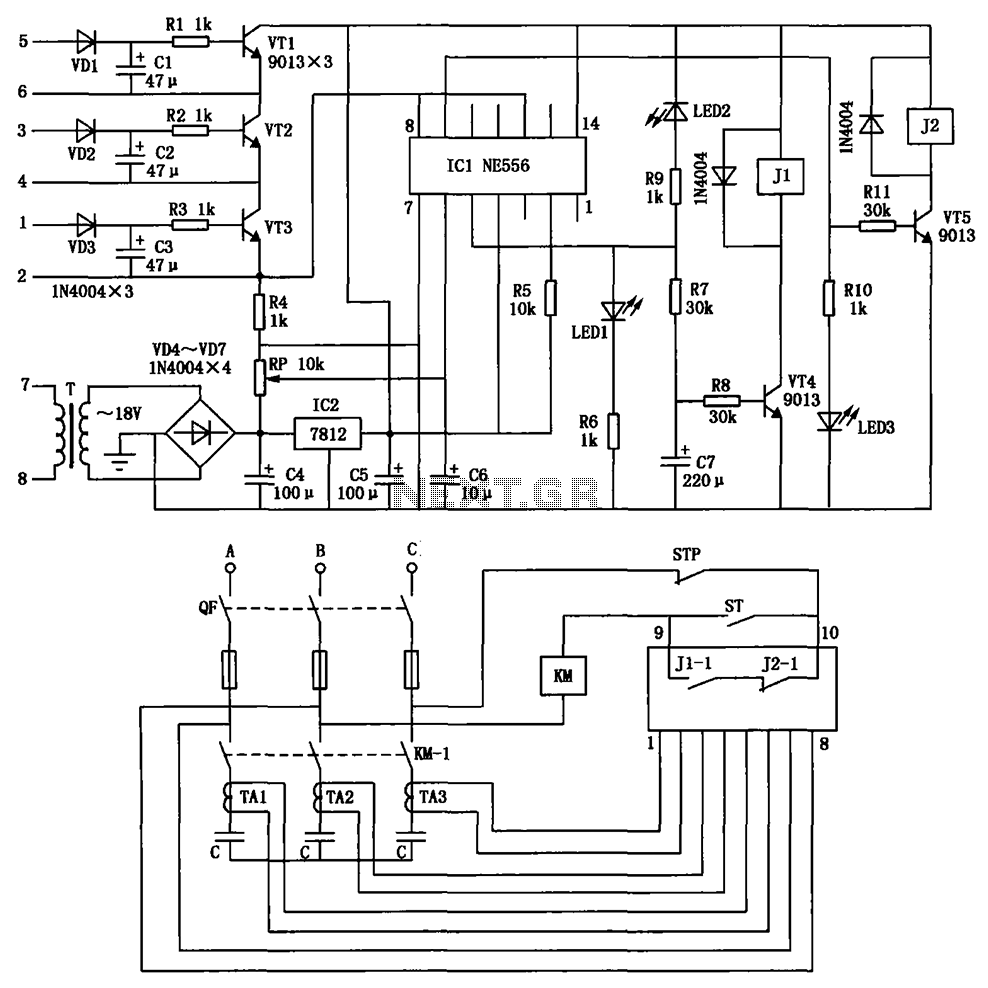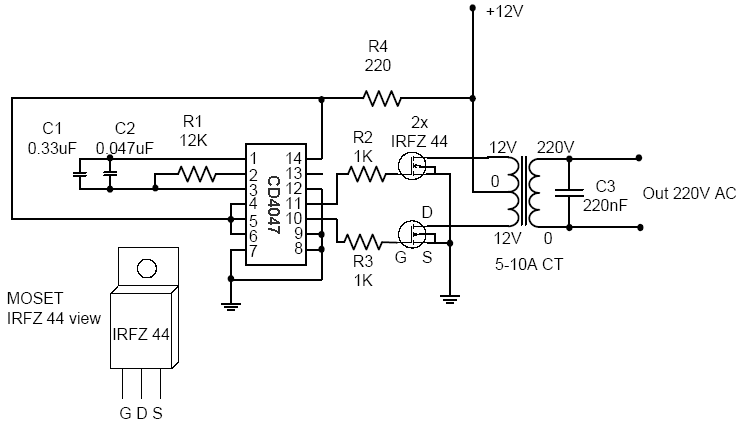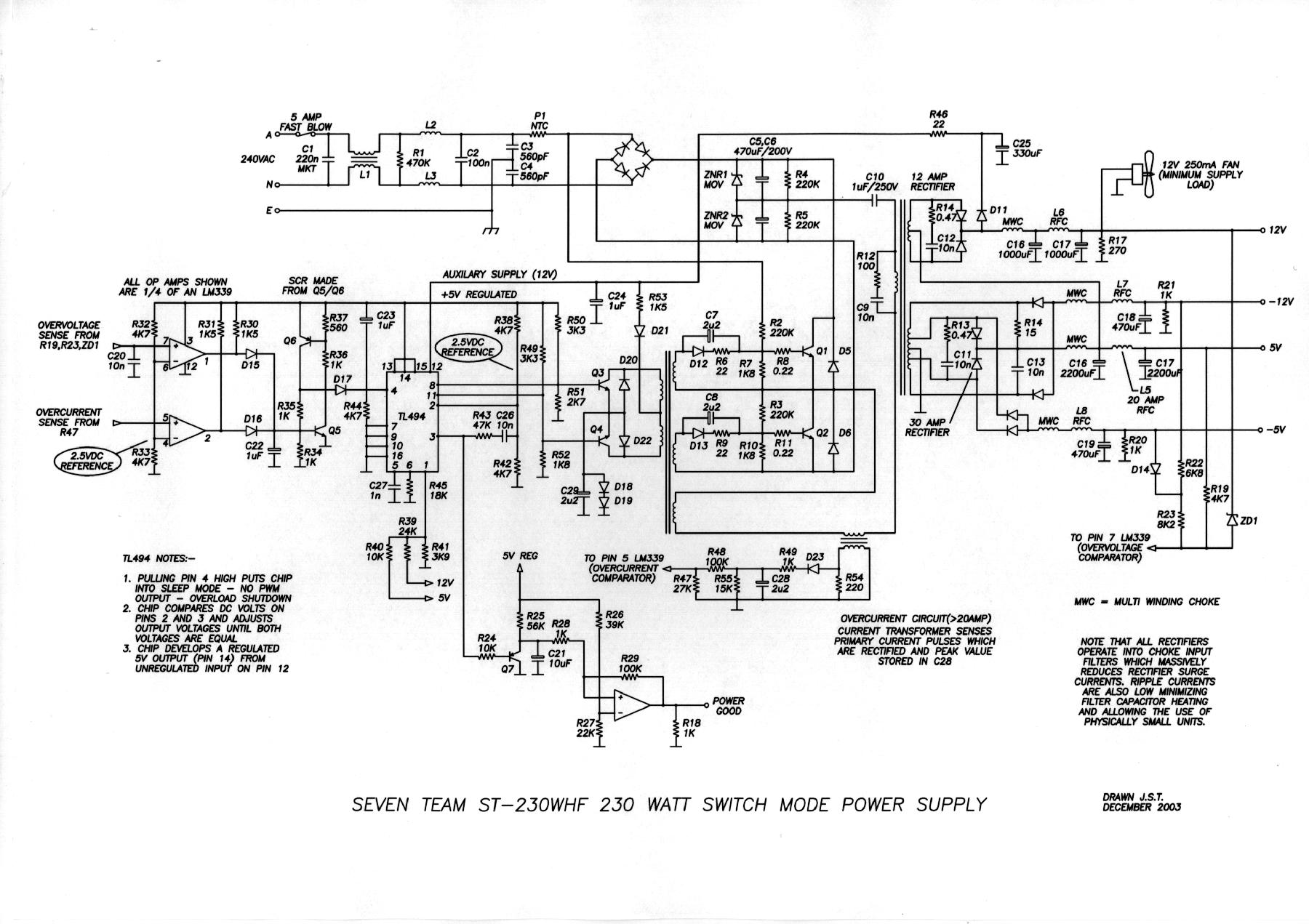
Simple Power Supply Suits VoIP/PoE Applications

Designing a power supply that meets the requirements of Power over Ethernet (PoE) and Voice over Internet Protocol (VoIP) applications can be complex. The low-component-count power supply illustrated in the figure complies with these specifications without requiring intricate circuitry. The circuit represents a typical converter for a powered device (PD) as defined by the PoE standard. The schematic incorporates the essential circuitry for "discovery" and "classification," along with a DP423G high-voltage power-conversion integrated circuit (IC) that implements the DC-DC converter. Upon the initial application of input voltage in the range of 2.5 to 10 V DC, the PD must present the correct "discovery" signature impedance, which is provided by resistor R1. As the input voltage ascends to the 15 to 20 V DC range, R1 also configures a "classification" current draw between 0.5 and 4 mA, designating this as a Class "0" PD. At voltages exceeding approximately 30 V DC (the cumulative voltage of the zener diode VR1, R2, and the gate-source threshold voltage of Q1), the MOSFET pass-switch (Q1) activates, connecting the input voltage to the power supply. Zener diode VR2 restricts the gate-source voltage of Q1 to safe levels when the input voltage is high (greater than 43 V DC). Resistor R3 inhibits unwanted turn-on, and in conjunction with VR1 and R2, it should be selected to prevent Q1 from turning on below 28 V DC. Resistor R2 limits power dissipation in the zener diodes VR1 and VR2; the higher the resistance, the lower the dissipation. The DPA423G (U1) operates at a frequency of 400 kHz. Resistor R5 sets the undervoltage and overvoltage thresholds. Resistor R6 manages the current limit of U1, and together with R4, it ensures a relatively consistent output-power limit across varying input voltages. When the drain of the device activates, energy is accumulated in transformer T1. Upon drain turn-off, the transformer voltage inverts (a clamp is provided by zener VR3 in parallel with capacitor C3) and is rectified by diode D1. Parallel output capacitors C7 and C8 filter the output and share the output ripple current. A post-filter (L2, C9) reduces switching ripple, complemented by a high-frequency decoupling capacitor (C10) positioned close to the output pins. The overall power supply achieves an efficiency of 78%, which is notable for such a straightforward flyback supply delivering 3.3 V at 2 A. For many applications, cost and simplicity may be the most significant features. If circumstances allow, efficiency could be enhanced by approximately 5% to 10% by transitioning to a synchronous-rectified forward converter and upgrading to the DPA424G, a higher-power device with reduced conduction losses.
The power supply circuit is designed to efficiently support PoE and VoIP applications, ensuring that powered devices can reliably receive power through Ethernet cables. The inclusion of discovery and classification functionalities is crucial for compliance with PoE standards, allowing devices to negotiate power requirements seamlessly. The DP423G IC serves as the heart of the converter, facilitating high-frequency operation that is essential for compact power supply designs. The use of a flyback topology enables isolation between the input and output, which is vital for safety in power delivery systems.
The component selection, such as resistors R1, R2, and R3, is strategic to ensure that the PD can accurately communicate its power needs while maintaining safe operation across a range of input voltages. The zener diodes VR1 and VR2 play a critical role in voltage regulation and protection, safeguarding the circuit against overvoltage conditions that could otherwise damage sensitive components. The transformer T1 is integral for energy storage during the switching cycle, and its design must ensure that it can handle the required power levels without saturating.
The filtering components, including capacitors C7, C8, C9, and C10, are essential for smoothing the output voltage and minimizing ripple, which is crucial for maintaining the performance of downstream devices. The overall efficiency of 78% is commendable for a low-component-count design, making it suitable for applications where cost and space are constrained. The potential for efficiency improvements by switching to a synchronous-rectified forward converter emphasizes the adaptability of the design for higher-performance needs in future implementations.Designing a power supply that meets the demands of Power over Ethernet (PoE) and Voice over Internet Protocol (VoIP) applications can be challenging. The low component-count power supply depicted in the figure meets these specifications without the need for complicated circuitry.
The circuit shows a typical converter for a powered device (PD) as d efined by the PoE standard. The schematic includes the necessary circuitry for "discovery" and "classification, " along with a DP423G high-voltage power-conversion IC implementing the dc-dc converter. When an input voltage is first applied in the range of 2. 5 to 10 V dc, the PD must present the correct "discovery" signature impedance. R1 supplies this impedance. As the input voltage reaches the 15- to 20-V dc range, R1 also programs a "classification" current draw between 0.
5 and 4 mA, identifying this as a Class "0" PD. At voltages above approximately 30 V dc (the total of the zener diode VR1 voltage, R2 voltage, and Q1 gate-source threshold voltage), the MOSFET pass-switch (Q1) turns on and connects the input voltage to the power supply. Zener diode VR2 limits the Q1 gate-source voltage to safe levels when the input voltage is high (greater than 43 V dc).
Resistor R3 prevents spurious turn-on, and along with VR1 and R2, it should be chosen to prevent Q1 turn-on below 28 V dc. Resistor R2 limits the power dissipation in zener diodes VR1 and VR2 ”the higher the resistance, the lower the dissipation.
The DPA423G (U1) switches at 400 kHz. Resistor R5 programs in the undervoltage and overvoltage thresholds. Resistor R6 controls the U1 current limit, and with R4, it provides a relatively flat output-power limit versus input voltage. When the drain of the device turns on, energy is stored in transformer T1. At drain turn-off, the transformer voltage inverts (a clamp is provided by zener VR3 in parallel with capacitor C3) and is rectified by D1.
Parallel output capacitors C7 and C8 filter the output and share the output ripple current. A post filter (L2, C9) attenuates switching ripple, with a high-frequency decoupling capacitor (C10) near the output pins. The overall power supply achieves an efficiency of 78%, an impressive feat for such a simple flyback supply delivering 3.
3 V at 2 A. For most applications, the cost and simplicity may well be the most important features. If situations dictate, efficiency could be increased by approximately 5% to 10% by changing the topology to a synchronous-rectified forward converter and moving up to the DPA424G, a higher-power device with lower conduction losses. 🔗 External reference
The power supply circuit is designed to efficiently support PoE and VoIP applications, ensuring that powered devices can reliably receive power through Ethernet cables. The inclusion of discovery and classification functionalities is crucial for compliance with PoE standards, allowing devices to negotiate power requirements seamlessly. The DP423G IC serves as the heart of the converter, facilitating high-frequency operation that is essential for compact power supply designs. The use of a flyback topology enables isolation between the input and output, which is vital for safety in power delivery systems.
The component selection, such as resistors R1, R2, and R3, is strategic to ensure that the PD can accurately communicate its power needs while maintaining safe operation across a range of input voltages. The zener diodes VR1 and VR2 play a critical role in voltage regulation and protection, safeguarding the circuit against overvoltage conditions that could otherwise damage sensitive components. The transformer T1 is integral for energy storage during the switching cycle, and its design must ensure that it can handle the required power levels without saturating.
The filtering components, including capacitors C7, C8, C9, and C10, are essential for smoothing the output voltage and minimizing ripple, which is crucial for maintaining the performance of downstream devices. The overall efficiency of 78% is commendable for a low-component-count design, making it suitable for applications where cost and space are constrained. The potential for efficiency improvements by switching to a synchronous-rectified forward converter emphasizes the adaptability of the design for higher-performance needs in future implementations.Designing a power supply that meets the demands of Power over Ethernet (PoE) and Voice over Internet Protocol (VoIP) applications can be challenging. The low component-count power supply depicted in the figure meets these specifications without the need for complicated circuitry.
The circuit shows a typical converter for a powered device (PD) as d efined by the PoE standard. The schematic includes the necessary circuitry for "discovery" and "classification, " along with a DP423G high-voltage power-conversion IC implementing the dc-dc converter. When an input voltage is first applied in the range of 2. 5 to 10 V dc, the PD must present the correct "discovery" signature impedance. R1 supplies this impedance. As the input voltage reaches the 15- to 20-V dc range, R1 also programs a "classification" current draw between 0.
5 and 4 mA, identifying this as a Class "0" PD. At voltages above approximately 30 V dc (the total of the zener diode VR1 voltage, R2 voltage, and Q1 gate-source threshold voltage), the MOSFET pass-switch (Q1) turns on and connects the input voltage to the power supply. Zener diode VR2 limits the Q1 gate-source voltage to safe levels when the input voltage is high (greater than 43 V dc).
Resistor R3 prevents spurious turn-on, and along with VR1 and R2, it should be chosen to prevent Q1 turn-on below 28 V dc. Resistor R2 limits the power dissipation in zener diodes VR1 and VR2 ”the higher the resistance, the lower the dissipation.
The DPA423G (U1) switches at 400 kHz. Resistor R5 programs in the undervoltage and overvoltage thresholds. Resistor R6 controls the U1 current limit, and with R4, it provides a relatively flat output-power limit versus input voltage. When the drain of the device turns on, energy is stored in transformer T1. At drain turn-off, the transformer voltage inverts (a clamp is provided by zener VR3 in parallel with capacitor C3) and is rectified by D1.
Parallel output capacitors C7 and C8 filter the output and share the output ripple current. A post filter (L2, C9) attenuates switching ripple, with a high-frequency decoupling capacitor (C10) near the output pins. The overall power supply achieves an efficiency of 78%, an impressive feat for such a simple flyback supply delivering 3.
3 V at 2 A. For most applications, the cost and simplicity may well be the most important features. If situations dictate, efficiency could be increased by approximately 5% to 10% by changing the topology to a synchronous-rectified forward converter and moving up to the DPA424G, a higher-power device with lower conduction losses. 🔗 External reference
Warning: include(partials/cookie-banner.php): Failed to open stream: Permission denied in /var/www/html/nextgr/view-circuit.php on line 713
Warning: include(): Failed opening 'partials/cookie-banner.php' for inclusion (include_path='.:/usr/share/php') in /var/www/html/nextgr/view-circuit.php on line 713
